ID 1129636
Lot 18 | Euclid's Elements
Estimate value
$ 300 000 – 400 000
A large, fresh copy of the first edition, first issue of “the oldest textbook in the history of science” (Norman) and “a monument of typography” (Kelly)—“an outstandingly fine piece of printing” (PMM). This copy with contemporary color and rubrication, as well as unusual and extensive marginal annotations in at least two hands, addressing some of the most complicated mathematics in the book as well as discussing the manuscript tradition and history of the text with an editorial eye.
“For twenty-three centuries the Elements of Geometry has been changing the world. A compendium of facts about space and its properties—lines and shapes, numbers and ratios—it has drawn countless readers into its limitless world of abstract beauties and pure ideas” (Wardhaugh). The Elements organizes all geometric knowledge from the time of Pythagoras “into a consistent system so that each theorem follows logically from its predecessor; and in this simplicity lies the secret of its success” (PMM). Read, reprinted and translated continuously, it has been a model for mathematical exposition up to the present day, training over two millennia of mathematicians from Archimedes to Anne Lister (and beyond).
Ratdolt’s first edition of the Elements is not only “one of the great classics in the history of science [but also] a masterpiece of early typographical ability and ingenuity” (Bühler). “Ratdolt created geometric diagrams which are so finely wrought that the method of manufacture still baffles historians of printing. The most accepted theory today is that they were made from bent rules or perhaps cast metal shapes, but we cannot be sure how such consistent, thin and accurate lines were printed” (Kelly). Other challenges included running out of woodcut initial Ss (due every proposition beginning with the same set formula) and a general shortage of capital letters resulting from their use in labeling the over 500 marginal diagrams—all met by Ratdolt to produce the most beautiful scientific book of the incunable period, which became the model for much that followed.
The annotations in this copy, in at least two hands, represent an uncommonly significant and learned engagement with the text. One hand, writing in a formal gothic script perhaps belonging to the "Magister Nicolas" who signed his name to a1r, works through some of the most difficult books of the Elements (indeed, he labels book 10 "difficilimus"). His annotations include manuscript geometrical diagrams, calculations, and reformulations of certain proofs in margins as well as on the final blank leaf. Dr. Benjamin Wardhaugh, who examined this copy, writes that “I have not seen a Ratdolt with this pattern of annotation. UCL's copy is typical in my experience: a certain amount of annotation in book 1, and the rest pretty much clear. Some annotators got a bit further through the text, but annotation of the later books, and the famously hard book 10, is exceptional in any edition.” There are additional annotations in a smaller, less formal, cursive, which may represent a later visitation of the text by the first annotator.
Another hand, identifying themselves only as "G.V.G.B.," writes in Latin and occasionally German. They are concerned with Luca Pacioli's 1509 commentary on Euclid, as well as alternate manuscript readings. Originally composed in Greek at the court of Ptolemy in Alexandria, Ratdolt's printed text is a Latin translation by Adelard of Bath and Robert of Chester from an Arabic recension, which was then edited and augmented in the 1250s by Campanus of Novara to become the definitive Latin version for the next several hundred years. But by the early 16th century, better manuscripts of Euclid in Greek were circulating, and could be compared with the Medieval version. Our annotator specifically comments on Campanus's editorial decisions, pointing out his editorial additions (and perceived failings). One note reads: nec potui invenire in primo libro in duobus vetustissimis codicibus ("nor was I able to find [this proposition] in book one in two very ancient codices"). According to Dr. Wardhaugh, “‘The hostile comments [about Campanus’s] text imply contact with a better or at least a different version of the text,” suggesting that ‘this annotator seems like an editor or would-be editor of the text, well-resourced and/or well-connected.” HC *6693; BMC V, 285; GW 9428; Bod-inc. E-036; BSB-Ink. E-106; Dibner 100; Goff E-113; Klebs 383.1; Norman 729; Redgrave 26; PMM 25; Thomas-Stanford 1a; Kelly, One Hundred Books Famous in Typography 4. See also Curt Bühler, “A typographical error in the editio princeps of Euclid,” Gutenberg-Jahrbuch 1966, pp.102-104, and Benjamin Wardhaugh, Encounters with Euclid (2021).
Chancery folio (306 x 210mm). 138 leaves. Incipit printed in red, woodcut three-quarter border [Redgrave border 3], woodcut initials, and more than 500 woodcut and type-rule geometric diagrams; initials painted in red and blue on pale yellow grounds, text rubricated in red and blue (a few minor spots). Contemporary Erfurt blindstamped calf signed by Johannes Helmstatt [EBDB w000841], brass strap attachments (rebacked preserving original endpapers but with new flyleaves, surface somewhat abraded with other repairs, lacking straps and catchplates). Morocco box. Provenance: "Magister Nicolaus" (inscription on a1r, and likely also the extensive annotations in a formal gothic script, perhaps also slightly smaller cursive annotations) – "G.V.G.B." (initials on front and rear pastedowns, ample contemporary annotations in a different hand) – pasted in German auction description, likely sold to: – John Camp Williams, 1859-1929 (red leather book label and signature dated 1900; his sale, Anderson Galleries, New York, 6 November 1929, lot 3786.
With thanks to Dr Benjamin Wardhaugh for considerable assistance in studying the annotations.
| Artist: | Euclid (325 BC - 265 BC) |
|---|
| Artist: | Euclid (325 BC - 265 BC) |
|---|
| Address of auction |
CHRISTIE'S 20 Rockefeller Plaza 10020 New York USA | ||||||||||||||
|---|---|---|---|---|---|---|---|---|---|---|---|---|---|---|---|
| Preview |
| ||||||||||||||
| Phone | +1 212 636 2000 | ||||||||||||||
| Fax | +1 212 636 4930 | ||||||||||||||
| Conditions of purchase | Conditions of purchase | ||||||||||||||
| Shipping |
Postal service Courier service pickup by yourself | ||||||||||||||
| Payment methods |
Wire Transfer | ||||||||||||||
| Business hours | Business hours
|
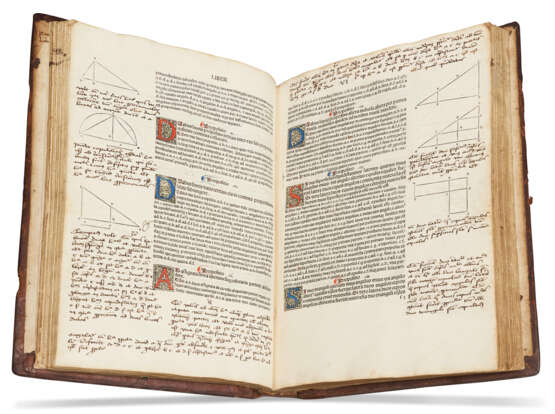
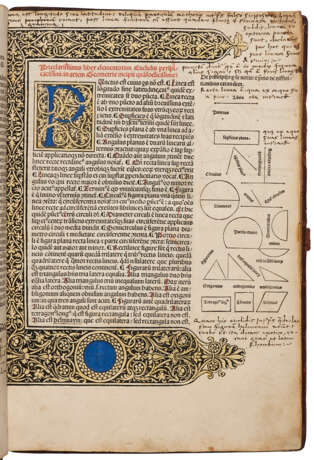
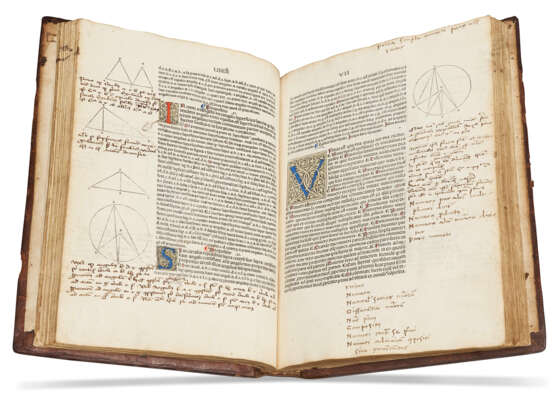
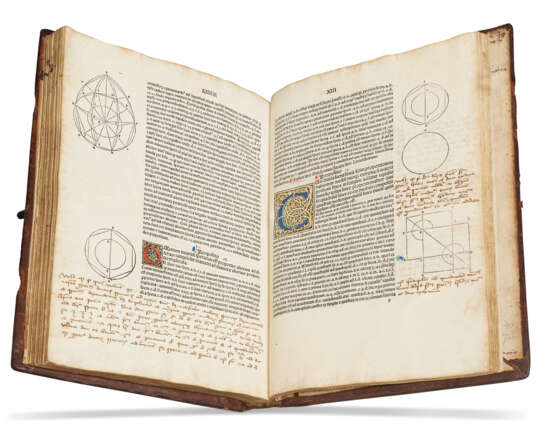

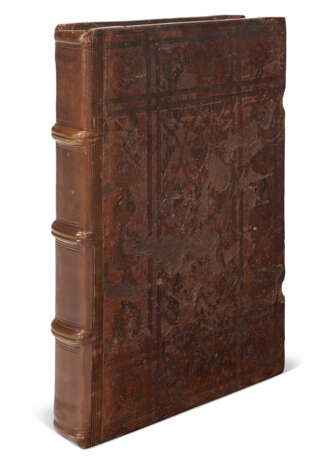

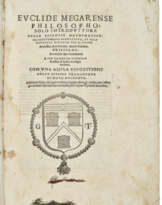

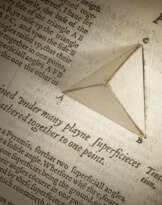

![Elementorum libri XIII [-Phaenomena; Specularia; Perspectiva; Data]](/assets/image/picture_2660725/b672f/tmy4rz51tjwgapdykc-mhx2t2fo94dzxjfn004pvhmp4ax5ep1latktpksi3zc1674692820jpg__fix_162_205.jpeg)




